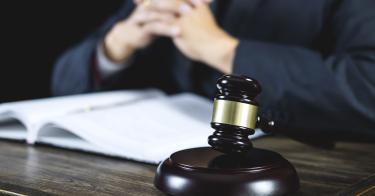President Donald Trump has announced his intention to nominate Whitney Hermandorfer to the U.S. Court of Appeals for the Sixth Circuit. She will be Trump’s first judicial nomination of his second term and will replace Judge Jane Branstetter Stranch, appointed in September 2010 by President Barack Obama.
Congress can use its legislative authority under Article I of the Constitution to create “Tribunals inferior to the supreme Court.” These include the U.S. Tax Court, U.S. Court of Appeals for the Armed Forces, and U.S. Court of Federal Claims. Judges on these courts serve for specific terms. In Article III, the Constitution itself created the Supreme Court and gave Congress authority to establish “inferior Courts.” These are the U.S. District Court, U.S. Court of Appeals, and U.S. Court of International Trade.
Together, these Article III courts exercise the “judicial Power of the United States.” Article III judges serve during “good Behaviour,” or until they are removed by impeachment. The Heritage Foundation’s Judicial Appointment Tracker follows the appointment process for Article III judges under Trump and under the previous seven presidents.
The judicial appointment situation is different from when Trump first took office, in 2017. Republicans had controlled the Senate during Obama’s last two years in office and confirmed 22 judges in two years, less than one-fourth the average. Those 22 judges constituted just 2.6 percent of the judiciary, the lowest percentage appointed in a two-year Congress since 1789. As a result, 106 positions on federal district and appeals courts were vacant when Trump took office and began making nominations in March 2017.
The opposite scenario exists today. Democrats controlled the Senate during President Joe Biden’s last two years and confirmed 139 judges, the third-highest total in American history. As a result, just 5.3 percent of the judiciary is currently vacant, the lowest percentage during a new presidency in more than 40 years.
Since 1980, an average of 45 judicial positions become vacant each year, three-fourths of which resulted from the incumbents’ taking “senior status,” remaining a federal judge with a reduced caseload but vacating his or her seat for a new appointment. If that pattern continues for the next four years, and Trump appoints the average number of judges (as measured by the past several presidencies), he will have appointed more than 400 judges during his two terms, more than any president in history.
>>> Awaiting the Nondelegation Doctrine’s Return
If Hermandorfer’s nomination is any indication, Trump will take the same approach, and use the same priorities and criteria, to judicial appointments as he did in his first term. She received her law degree from George Washington University Law School, where she was editor in chief of the law review, and has clerked for judges at all three levels of the federal judiciary: Richard Leon on the U.S. District Court for the District of Columbia; Brett Kavanaugh on the U.S. Court of Appeals for the D.C. Circuit and the Supreme Court; and Supreme Court Justices Samuel Alito and Amy Coney Barrett. During her stint in private practice at Williams & Connelly, the Legal 500 named her a “rising star” in the appellate category. She is now the director of the Strategic Litigation Unit in the Office of the Tennessee Attorney General.
As expected, liberal groups immediately attacked Hermandorfer’s nomination as “appalling” and as a signal of a “dangerous direction for the judiciary.” As they no doubt will regarding each of Trump’s judicial nominations, they claim that the president “seeks to stack the judiciary with those who will do his bidding.” These are the same groups that urged incoming President Biden to appoint judges who would further his political agenda and supported “packing” the Supreme Court with justices who would do the same.
Expect more of this mantra, with the name of the current nominee cut and pasted, in the months ahead.
This piece originally appeared in the National Review




